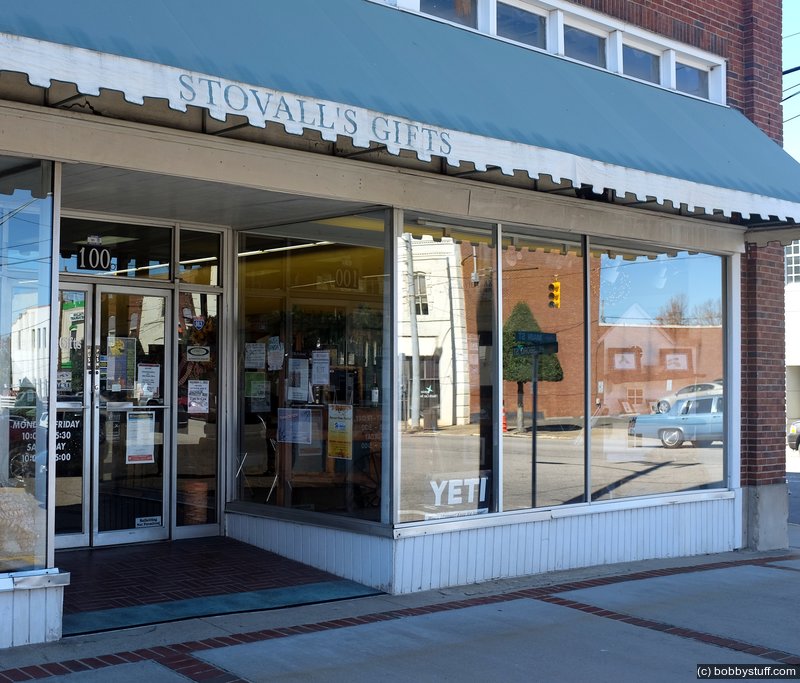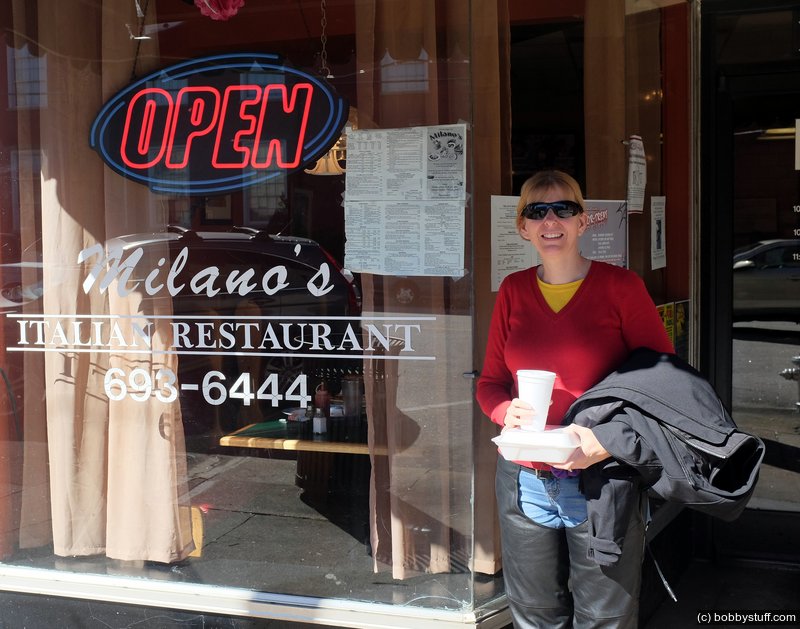Granville County Courthouse in Oxford, North Carolina
Laurie and I like riding our Gold Wing motorcycle. But it is easy to get into a rut and just ride the same roads. So to force ourselves to ride to places we would not normally visit we made a goal to visit and photograph all 100 North Carolina courthouses within 1 year.
As usual, we got a little behind. We started in July 2015 and finished 99 out of 100 by June 2018. The last courthouse was in our home county of Wake and it took us until Feb 2021 to get that final one. But we made it! This blog is about one of those visits.
Many NC courthouses were added to the National Register of Historic Places in 1979. The nomination form has some interesting facts about the various courthouse styles over the years.
Courthouse Information
Wikipedia says the following about the courthouse:
Granville County Courthouse is a historic courthouse building located at Oxford, Granville County, North Carolina. It was built in 1838, and is a two-story, "H"-shaped, Greek Revival style brick building. It has a three bay central pavilion and a polygonal cupola with a domed room.[2] It was listed on the National Register of Historic Places in 1979.[1] It is located in the Oxford Historic District.
County Information
The North Carolina History Project lists the following information for this county:
Annexed from Edgecombe County in 1746 thirty years before the signing of the Declaration, Granville was named in honor of the second earl of Granville, John Lord Carteret. King George II had given most of present-day Granville County land to Carteret as part of the Granville Grant in the 1660s. Oxford serves as the seat of government in Granville, established in 1811 after the seat was moved from the town Granville Court House. Other towns include Stem, Creedmoor, Butner, and Stovall.
Like most early counties on the eastern side of the early North Carolina colony, Granville was site of the Tuscarora uprising. Once the natives were defeated after the Tuscarora War, Virginia farmers and their families settled Granville County and they focused on producing tobacco. Slave labor proved vital to the fledging economy of the region, and by the start of the Civil War, Granville plantation owners worked over 10,000 slaves on their farms.
During the Civil War, more than 2,000 men from Granville County served the Confederacy. One company was known as the "Granville Grays." Most in this regiment fought in most major battles during the war. Surprisingly, many survived until the end of the war.
Although the Civil War brought an end to the plantation and slave labor economy that had made Granville County prosperous, the agricultural sector continued to thrive in the county due to the presence of free African Americans in Oxford and the discovery of bright leaf tobacco. Many African Americans in Granville County were free before the start of the Civil War, and they made lasting contributions to the region, particularly through their skilled labor. Several black masons constructed homes for the county's wealthy landowners. Additionally, the bright leaf tobacco crop proved a successful agricultural product for Granville County. The sandy soil and a new tobacco crop could be "flue-dried" proved a great incentive to farmers and tobacco manufacturers.
According to historian William S. Powell, Granville has remained a top tobacco-producing county in North Carolina for several decades. By the late 1800s and early 1900s, Oxford had become a thriving town with new industries, schools, literary institutions, and orphanages forming due to jobs created by the bright tobacco crop. In the 1950s and 1960s, various manufacturing businesses had built up across Granville County, and the region gradually moved away from the agricultural sector. Today, the manufacturing industry produces china, tires, and clothing products in Granville County.
John Penn (1740-1788) was an affluent politician of early America, as he was one of the three signers of from North Carolina to sign the Declaration of Independence. After earning his admittance to the bar, Penn moved to Granville County in 1774. The county had become the hub of Carolina's independence campaign. A remarkable orator, Penn had earned a place at the Third Provincial Congress of 1775, and he replaced Richard Caswell, joining William Hooper and Joseph Hewes in Philadelphia for the convening of the Continental Congress in 1776. Later, John Penn, with Cornelius Harnett and John Williams, signed the Articles of Confederation for North Carolina. Penn retired to Granville County, and he died at a relatively young age of 48 years old in 1788. His remains are interred at the Guilford Courthouse National Military Park in Greensboro.
Several academies and orphanages were built in and around the town of Oxford during the middle and late 1800s. The Oxford Orphanage, opened in 1873 by John H. Mills, and the orphanage looked after more than 130 children during its first operating year. In 1883, the Colored Orphanage Asylum of North Carolina was opened in Oxford "as a nondenominational institution to care for children deprived of their parents" in hope to care, train, and educate neglected children. In 1986, the orphanage became known as the Central Children's Home of North Carolina, and it became a historic site on the National Historic Registry in 1988. The Oxford Female College formed in 1850 as a Baptist academic institution, and Franklin P. Hobgood served as its president from 1880 until 1924.
Camp Butner, opened in 1942 as a training camp for World War II soldiers, once encompassed over 40,000 acres in Granville, Person, and Durham counties. During the war, more than 30,000 soldiers were trained at Camp Butner, including the 35th and 89th Divisions. The hilly topography at Camp Butner proved helpful in teaching soldiers how to respond to gas bombings and how to use camouflage and cross rivers. Additionally, both German and Italian prisoners served as cooks and janitors at Camp Butner. Today, most of the land that was Camp Butner now belongs to the North Carolina government, and the no longer operational, Umstead Hospital was located at the Camp Butner site.
Our Experience
It was past Laurie's feeding time so she headed into Stovall's Gifts to find out where the local's eat. Julia gave her a postcard of the courthouse in winter and told her to eat at Milano's Italian Restaurant. We had potatoe skins and lasagna. It was very good.
After lunch we noticed people collecting on the sidewalks and the police were blocking the streets. Someone said there was going to be a parade. We had other courthouses to visit this day so we decided to not stick around for the parade. This was a nice downtown.

Granville County Courthouse in Oxford, North Carolina

Granville County Courthouse in Oxford, North Carolina

Granville County Courthouse in Oxford, North Carolina

Granville County Courthouse in Oxford, North Carolina

Granville County Courthouse in Oxford, North Carolina
Bobby, Laurie

Granville County Courthouse in Oxford, North Carolina
Laurie

Granville County Courthouse in Oxford, North Carolina
